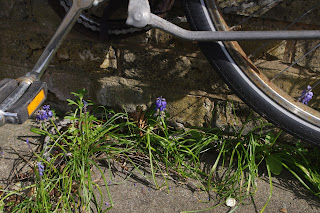A package of seeds for the allotment has arrived in the post courtesy of a £20 voucher my brother gave me to place an order with King Seeds/Suffolk Herbs. I ordered five packets of various 'green manures' i.e. fast growing plants that enhance the soil. 'Living mulch' might be another way of putting it as they quickly cover bare ground, suppress weeds and prevent erosion. Their root systems improve soil structure and some act as nitrogen fixers. The White and Crimson Clovers for example have long been part of the crop rotation cycle in agriculture.
The usual advice is to dig in green manures before they flower but left to flower they are great for pollinating insects. The Phacelia for instance produces a lovely haze of blue flowers and features in every list of the best bee plants.
Some green manures are simply crops we are not in the habit of eating like the Buckwheat which is also the source of Buckwheat Flour. I bought winter hardy Field Beans to sow later in the year, they are a relative of the Broad Bean and edible.
I also bought seed for some other flowery edibles- Pot Marigold (bright orange flowers), Wild Rocket (bright yellow flowers), Chicory (sky blue flowers) and two kinds of Radish. If you don't get round to picking all your Radishes they put on an airy display of small white flowers in late summer.
Today I scattered some of the Radish seed among the emerging leaves of Allium sphaerocephalon. This bulbous Allium is usually grown as an ornamental for tall stems topped by a round head of pink/purple flowers but is edible by most accounts though I haven't tried it yet. I think the Radish will function as a simple form of intercropping without smothering the Alliums.
I sowed "18 day Radishes" so I will write an entry in 18 days or thereabouts to say if they have lived up to that description!
























